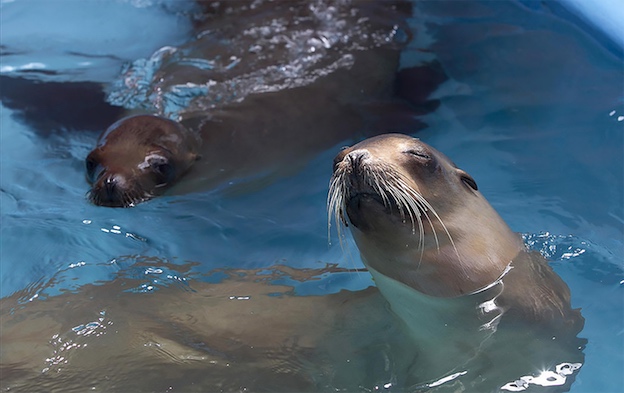Larger than usual Pacific algal blooms are being blamed for the deaths of 26 out of 40 rescued sea lions at California’s Pacific Marine Mammal Center, in Laguna Beach. Demoic acid released by the blooms makes fish species like sardines toxic to predators like the sea lions. The toxin inhibits nerve transmission in the animal’s brain. Sea lions can become lethargic, disoriented and suffer seizures. Mild cases engender vomiting, diarrhea, abdominal cramps, headache and dizziness; in severe cases symptoms include difficulty breathing, short-term memory loss, coma or death. Pregnant females are especially vulnerable as they eat more. Seven females gave birth to premature pups, none of which survived, the centre said.
This year’s bloom stretches all the way from Santa Barbara south to the Baja peninsula. Scientists believe chemical triggers associated with broader changes in circulation, physics, and bio-geochemistry in the region combined with local urban and agricultural runoff along the coast have created the persistent and very toxic harmful algal blooms.
From CS No16 June July 2017


